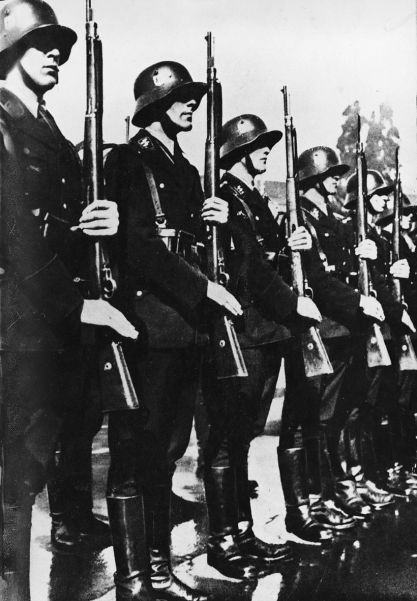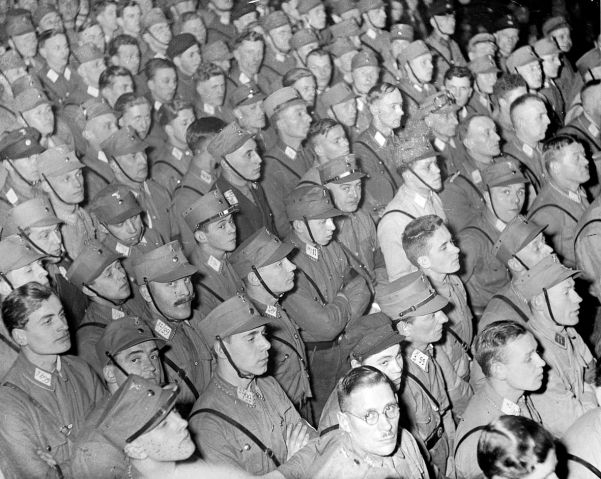9 November
Nazi Party, Rallies

The ceremonial consecration of the Leibstandarte SS Adolf Hitler is formalized in front of the Feldherrnhalle on the occasion of the Commemoration of the Munich Putsch. Here, the members of the Leibstandarte take a personal oath of allegiance to Hitler. This dispels any thoughts that these men are anything but his personal cohort. Himmler theoretically has control over the unit, however in reality the ultimate director of its function is Hitler, conjoined with the fact of his personal friendship with the Guard Commander, “Sepp” Dietrich, assumes an independence within the SS organization for the Leibstandarte that no other unit enjoys. This led Himmler to complain that it was “a complete law unto itself.” Dietrich has scant regard for Himmler, addresses him on equal terms and is often engaged in arguments with him. The rivalry between the two men and the regard the officers of the Leibstandarte have for their commander can best be summed up by the gift he received on the occasion of his 50th birthday. A collection had been made among the officers so that an honour sword could be presented in the name of the entire officer corps. The gift was made by Untersturmfühers Brohl and Peiper, and on the blade were the 105 names of the men. After wearing it during the Olympic Games in Berlin, Himmler forbade Dietrich from wearing the unofficial sword. The unruly Dietrich obviously upstaged the “Boss” and the officer corps had acted without obtaining Himmler’s permission. This amounted to insubordination that was too much to bear.
10 November
Armed Forces, Air Force

When Hitler came to power in 1933 he introduced the Deutscher Luftsport-Verband. This organization is to stimulate air-minded young men. The club offers its members, most of whom have been in the armed forces, the active disciplined life for which they yearned, to such an extent that on November 10, 1933 Hitler introduces for the DLV a special uniform with rank and trade insignia. Under the direction of this organization the members will learn the three main aeronautical skills: ballooning, glider and powered flight.
Previously the Reichswehr, fearing that it was being left behind in its capacity to defend itself, secretly negotiated with the Red Army early in 1923 and finally signed an agreement in April 1925, which made the Lipezk Airfield in Russia available for German military training. In 1926, besides the fighter pilot training that was already underway, observer training began. Added to this, a special unit for testing new aircraft and weapons was also included. Between 1925 and 1933 approximately 120 officers returned from this flying school in Russia, being fully trained as fighter pilots.
Now Hitler has abandoned the school at Lipezk and relies on the DLV to train the new personnel of his clandestine Luftwaffe (Air Force).
12 November
Germany, Elections
A national referendum is held, in which 95 percent of the electorate approve Nazi policy. This vote is the culmination of the Nazis’ work throughout the 1920s and early 1930s. Though the Nazis have undoubtedly played on anti-Semitic feelings, scare-mongering and “stab-in-the-back” theories, they have also made expert use of newspapers, the radio and mass demonstrations of power. The Kraft durch Freude (Strength through Joy) movement is founded. Cardinal Faulhaber speaks out against Nazi anti-Christianity. Old Freikorps units are given a ceremonial dismissal parade by a grateful regime.
